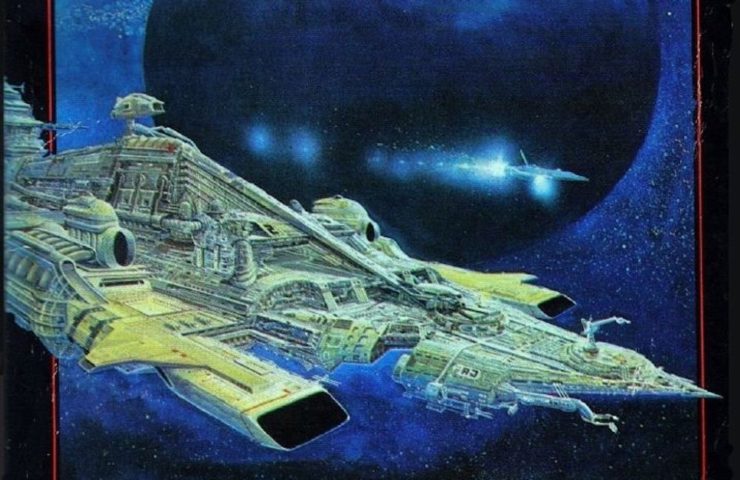Recently, physicists around the world were astounded to learn that painstaking testing of the visionary EmDrive revealed that the device produces no discernable thrust. By “astounded,” I mean “not astounded” and by “visionary,” I mean “almost certainly nonsensical from word one.” A cynical physicist might say the EmDrive produces thrust by violating conservation of momentum. This is unfair, because the EmDrive does not produce thrust at all.
One can understand the attraction of a reactionless drive. It comes down to the rocket equation, which presents steely-eyed rocket persons with a choice between annoyingly limited delta-v (and accordingly restricted choice of orbits), or exhaust streams energetic to a degree we don’t currently know how to manage.
The equation in question is delta-v = Vexhaust Ln(Mo/Mf) or as all the cool kids are phrasing it these days, Mo/Mf = e(delta v/Vexhaust), where delta-v is the change in velocity, Vexhaust is the velocity at which reaction mass is expelled, ln the natural logarithm, e is a constant approximately equal to 2.72, Mo is the initial total mass including propellant, and Mf is the final mass. As is intuitively clear, because e is raised to the power of delta-v/Vexhaust, as delta-v exceeds Vexhaust, Mo/Mf becomes increasingly unmanageably large.
For example, suppose we had a rocket whose Vexhaust was the computationally convenient 5 km/s. Mass ratios for various missions might look like this.
| Trip | Delta-v (km/s) | Mo/Mf |
| Low Earth Orbit to Low Mars Orbit | 5.8 | 3.2 |
| Low Earth Orbit to Low Venus Orbit | 6.9 | 4.0 |
| Low Earth Orbit to Low Ceres Orbit | 9.5 | 6.7 |
| Low Earth Orbit to Low Mercury Orbit | 13.1 | 13.7 |
| Low Earth Orbit to Low Jupiter Orbit | 24.2 | 126.5 |
The rocket equation is vexatious for SF authors for a couple of reasons: 1) It’s math. 2) It imposes enormous constraints on the sort of stories the sort of author who cares about math can tell. Drives that produce thrust without emitting mass are therefore very attractive. Small surprise that persons with an enthusiasm for space travel and a weakness for crank science leap on each iteration of the reactionless drive as it bubbles up in the zeitgeist.
One such crank was John W. Campbell, Jr., the notorious editor of Astounding/Analog (for whom a dwindling number of awards are named). Because of his position and because authors, forever addicted to luxuries like clothing, food, and shelter, wanted to sell stories to Campbell, Campbell’s love of reactionless drives like the Dean Drive created an environment in which stories featuring such drives could flourish, at Analog and elsewhere.
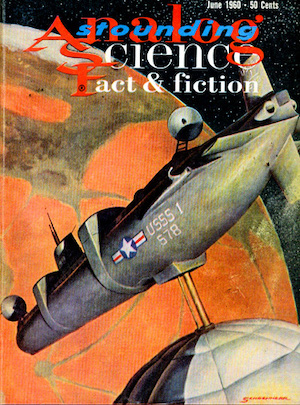
Consider these five works.
Seetee Ship by Jack Williamson (1951)
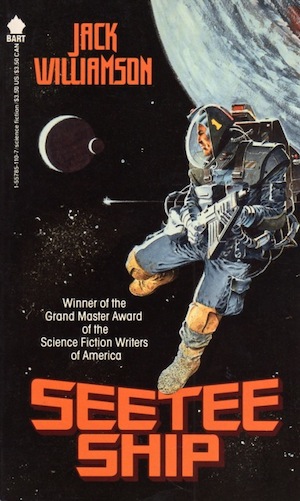
By 2190, ample sources of conventional fission fuels are running low. Not to worry! Paragravity drives make the asteroid belt easily accessible and the asteroid belt is chock-full of SeeTee or Contraterrene Matter (better known to modern readers as antimatter). Contact between SeeTee and matter produces prodigious energy. It’s the solution to humanity’s energy troubles! Except even visionaries like Rick Drake will admit the fact nobody knows how to manipulate SeeTee safely seems to make SeeTee an insurmountable opportunity. Not that Drake will let near-certain death prevent him from mastering SeeTee and freeing the Belt from the oppressive Mandate.
Why is the asteroid belt full of antimatter? The antimatter is why there’s an asteroid belt, rather than the regular world that was there until the rogue SeeTee worldlet collided with it.
The SeeTee series to which SeeTee Ship belongs is notable for featuring the first known use of the term “terraforming.”
***
“A Spaceship Named McGuire” by Randall Garrett (1961)
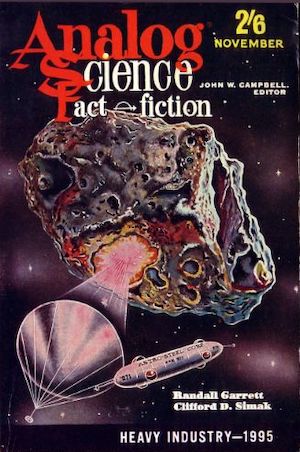
The magnetogravitic drive propelling the MG-YR-7 “McGuire” spacecraft was old hat. The Yale robotic brain within it, on the other hand, is cutting-edge stuff. If the MG-YR-7 works according to plan, it will revolutionize the economics of space travel. Unfortunately, the robot brains of MG-YR-1 through 6 went bonkers and despite the minor issue that robot brains should not be able to go mad, MG-YR-7 seems to be headed down the same path. It’s up to trouble-shooter Daniel Oak to find out why.
This is notable for two details. One, the eventual explanation for what’s driving the robots nuts—a dame—is remarkably sexist by the standards of a time when women could not open a bank account without the supervision of a spouse or male relative. Two, this story and others like it by Garrett, are the source from which Larry Niven lifted his Belter civilization, as explained in Niven’s “How I Stole the Belt Civilization.” Examples of authors working along the same lines as Garrett and Niven are too numerous to mention, although I will sure give it a shot in a future essay.
***
Tales of the Flying Mountains by Poul Anderson (1970)

Earth is divided and overpopulated and its space programs are faltering thanks to the realities of the rocket equation and the inability of short-sighted politicians to see the long term. Gyrogravitics could provide humanity with the means to seize space’s wealth…if only some way can be found to circumvent Earth’s stubbornly blind functionaries and so facilitate the creation of the Asteroid Republic!
This is, and I say this as something of an Anderson fan, almost the Platonic ideal of inoffensively unremarkable reactionless drive stories seemingly designed to appeal to Campbell’s various obsessions. In fact, the aspect of the collection that I remembered most clearly was how much trouble I got into at school due to the gratuitous bare breasts on the Collier Books / Macmillan cover. Dear cover artist, those are not the flying mountains to which Anderson referred!
***
In Our Hands, the Stars by Harry Harrison (1970)
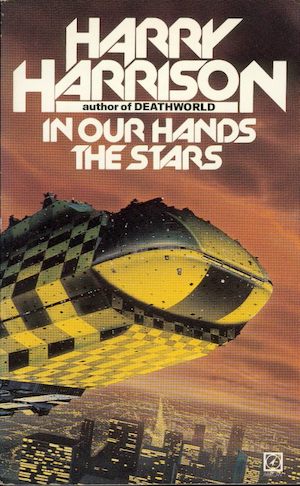
Professor Arnie Klein’s discovery leveled his Tel Aviv laboratory and presented him with a seemingly intractable problem. True, his Daleth Effect was the functional equivalent of antigravity, thus cheap space flight. At the same time, the Daleth Effect’s destructive potential was enormous. Nuclear weapons were bad enough. To whom could the Daleth Effect be entrusted who would not immediately use it for military purposes? Obviously, Denmark!
In Our Hands, the Stars is notable for two reasons. One is that rather than ignoring the weaponization potential of reactionless drives, Harrison leans into it. The other is that while Klein does not realize it, the secret of the Daleth Effect is not how it works, but that it works at all. As soon as that is revealed, there’s no hope that one nation can monopolize the physics.
***
Star Driver by G. Harry Stine AKA Lee Correy (1980)
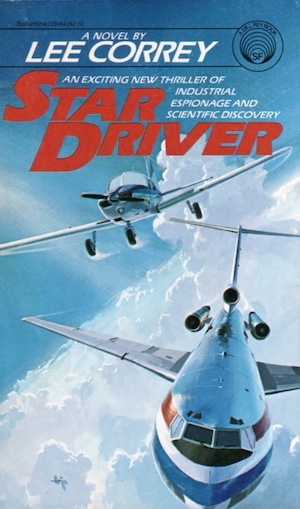
Wild Bill Osbourne’s NEMECO has a space drive. More exactly, NEMECO has something that could become a space drive. Currently, the device is mainly good for consuming research funds, testing the tolerance of lab walls for high-speed collisions, and motionlessly bursting into flames. Nevertheless, Osbourne and his team are determined to persevere in his quest to give humanity the stars—if basic engineering roadblocks and NEMECO’s bean-counters do not kneecap the project first.
Stine got roped into the whole Dean Drive thing early on and remained an enthusiast. It’s not surprising that even long after Campbell was dead and no longer a significant market for SF, Stine produced just the sort of book he could have flogged to Campbell, save for one detail. Perhaps because Stine had himself been involved in research programs, there is lots of talk early on about zooming off to Mars, but practicalities limit short-term applications to mundane demonstrations involving conventional aircraft.
***
No doubt you have your own favourite reactionless drive stories! Well, a small subset of you probably does. Perhaps a very small subset. Feel free to mention them in the comments.
In the words of Wikipedia editor TexasAndroid, prolific book reviewer and perennial Darwin Award nominee James Davis Nicoll is of “questionable notability.” His work has appeared in Publishers Weekly and Romantic Times as well as on his own websites, James Nicoll Reviews and Young People Read Old SFF(where he is assisted by editor Karen Lofstrom and web person Adrienne L. Travis). He is a four-time finalist for the Best Fan Writer Hugo Award and is surprisingly flammable.










